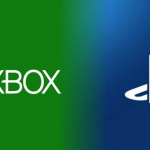Your USPs – unique selling points – are key factors of your game that make it worth spending both time and money on. Press look for these to instantly decide whether a title is worth delving more into – even most poor reviews stem from a great USP, executed or described ineffectively. Think of them as your elevator pitch – a short, easy way for a busy journalist to get a great sense of what your game is.
Now, how do you communicate those fantastic features of your game to the press in a quick, concise way? We’ve compiled a list of 5 tips to really get the most out of your game’s key selling points.
Note: Some of the games listed as examples in this blog were press campaigns run by Game If You Are.
1. Keep them clear
- First – outline them yourself as clearly and simply as possible. If you can’t summarise it in one sentence, it’s too complex! This will then give you a basis for all copy, as you ensure you hit on each point at least once.
- Don’t worry about presenting them in a clever or appealing way first, just get them down on paper – you can then move on to find the best words to really draw the press in.
- A fantastic example of this is the messaging of SUPERHOT, a shooter with one key hook distilled perfectly into their tagline: “Time moves when you move”.
2. Show, as well as tell
- Represent your selling points visually, show them in action through screenshots, GIFs or via your trailer. Not only will communicating exactly what aspects of your game make it special (as words can only do so much!) but it proves to press that these things are in your game – and you’re not just making them up!
- Countless research reports have shown that visual images are far more effective in not only communicating something but having that something be retained by the reader.
- Visual content is easier to understand, often beyond the cultural and linguistic barriers, and takes less time to communicate the same concept as text – and time is a precious commodity to journalists!
- Most people remember 80% of what they see and only 20% of what they read!
- Below are examples from the Steam page of Not For Broadcast, a newsroom sim. Under each feature bullet point is featured a gameplay GIF showing in action the exact feature written above.
3. Be relevant & specific
- It may be tempting to refer to other titles that have mechanics/art/story that inspired your work. While a very useful tool when used right, this is a way of communicating your selling point that can go either way. It instantly gives press an impression of your game, which can be incredibly helpful in capturing attention – however, lean on a comparison too much, and your game will be put into competition with that title!
- Use specific, targeting language when drawing reference to other titles, specifically citing influence from a certain mechanic or atmosphere.
- Use this technique to easily communicate your game to the press and not as a part of your centralised marketing copy.
Weaving Tides by Follow the Feathers – Kickstarter page
4. Don’t hide them away!
- Make it as easy as possible for the press to find out your USPs. This involves ensuring your headline/taglines are short but encompass what your game is doing and why people should care.
- A great way to practice selling your game in one short sentence is to nosy in on what other developers are doing! Gamasutra has a constant stream of press releases, which you can scroll through. Pick out which press release titles jump out at you, and ask yourself why?
- However, this can be as obvious as outlining your game’s best features in a clear, short list of bullet points in an easy to find place. Press are well known to have very little time, make the best use of their short time with your marketing materials.
Weaving Tides by Follow the Feathers – official website
5. Talk to someone new
- Consult with someone external before approaching the press – find someone with no knowledge of your game, but familiar with gaming scene and culture and pitch it to them using only the features you’ve pulled out. If they have questions, or can’t find the reason to be excited, it’s time to go back to the drawing board.
- If you have one, ask your community – why did they play your game? What drew them to it? What were their first impressions? By bringing in someone new, you may find features and appealing factors about your game you didn’t plan for or intend.
- This external factor can also take the form of a marketer or PR consultant, as they will be able to not only identify exciting features of your work you may have missed (or be brutally honest about USPs that may not be as effective) but they will also assist in phrasing them for both press and public consumption.
Overall, it’s a tough job pointing out the best parts of your work, and often can feel impossible to see your game through a marketing lens. The best piece of advice we can offer is that the press wants to like your game, you just have to make it as easy as possible for them to understand why they should!



